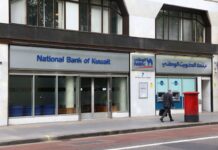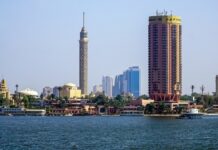Ethical investment is not new to the Middle East. Research indicates the issuance of the first Islamic bond, or sukuk, in Damascus 1,300 years ago. Today, ethical investment also represents stimulating opportunity for the region. Green sukuks and bonds have been issued in Doha, Riyadh, and Abu Dhabi in recent years. Regional government entities are recognising the opportunities within ESG finance. That is not only in meeting net-zero targets set out by nations in the GCC. Through its compatibility with Islamic finance, ESG investing promises regional markets greater liquidity. It also promises opportunities for broader future growth.
Islamic finance and green investing hold much in common. Responsible stewardship is at the core of both sharia-compliant and ESG-focused finance. Each implements strong governance structures regulating activity. Principles adopted by global fund managers have been long practiced in Islamic finance.
Sharia-compliant assets are competitive on the global stage. S&P Global Ratings predict Islamic finance to grow between 10 – 12% over 2021 – 2022. [i] Analysts expect $140 – $155 billion of sukuks to be issued this year. [ii] April to July 2021 saw strong performance for Saudi and Omani Islamic finance. Islamic finance is not only akin to ESG finance: it is a muscular global sector. A vibrant ecosystem for green finance already exists within the GCC market.
If the regional market is well suited for green finance, then green finance is well suited for the region. The growth of new asset classes can spur greater liquidity in the GCC’s markets. Enhanced market liquidity is a constant aim for regional governments. The Dubai government underscored that importance at the start of November 2021. It announced the listing of ten state-owned enterprises on the Dubai Financial Market. Such moves increase markets’ liquidity and fortify their attractiveness to global investors.
How do green bonds fulfil that promise of heightened market liquidity? First is the sheer growth expected in the sector, indicative of the asset’s liquidity. S&P has predicted that 2021 will see a 40% year-over-year increase in sustainable debt issuance. [iii] Another factor used to indicate liquidity is an asset’s market globalisation. Green bonds have been issued in 32 separate currencies. [iv] Those include the Swedish Krona, the Japanese Yen, and the Canadian Dollar.
Most significantly for GCC markets, increased liquidity depends on two forces. First is increased investor appetite. Second is access. With more options, investors have increased routes to market. With that, there are greater opportunities to increase volumes of trading. Green bonds’ exceptional performance since their first issuance is indicative of that demand. Their market has expanded from $1.48 billion in 2007 to an expected $650 billion in 2021.[v] Such meteoric performance demonstrates the dynamic demand for ethically focused investment instruments.
Taken in sum, green bonds can not only finance environmental projects. They have strong growth prospects. They are traded across a range of multiple global markets. They are in high international demand. This asset class presents fertile opportunities to drive liquidity into the regional market.
Yet growth in green finance is not only a short-term opportunity for the region. Tomorrow’s investors will be focused on the environment when assessing markets. Millennials, born from 1981 to 1995, are now a significant segment of global investors. They are twice as likely to invest in environmentally or socially focused funds, compared to the wider population.[vi] Meanwhile, Gen Z – born from 1996 onwards – share millennials’ focus on ethical finance. Comprising one-third of the global population, their future market power will be substantial.[vii] 72% of surveyed Gen-Zs express hope that ethical investing can improve sustainability outcomes. [viii]
For GCC markets, the ESG-centric focuses of both demographics are reason for attention. Financial centres in Dubai, Riyadh, Doha, and elsewhere have a potent opportunity. They can appeal toward this new generation over their long-term investing career and boost regional capital markets over subsequent decades. Failure to capture investment from these investor classes will dampen future market opportunities. In bolstering green investment, regional markets can not only enhance performance today. They can ensure global relevance for tomorrow.
[ii] Ibid.




